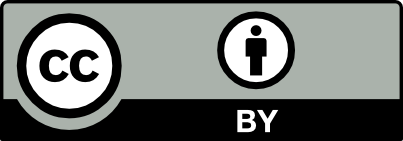Volume 31, Issue 201 (10-2021)
J Mazandaran Univ Med Sci 2021, 31(201): 39-58 |
Back to browse issues page
Download citation:
BibTeX | RIS | EndNote | Medlars | ProCite | Reference Manager | RefWorks
Send citation to:



BibTeX | RIS | EndNote | Medlars | ProCite | Reference Manager | RefWorks
Send citation to:
Dehghan S, Shakeri A, Tahergoorabi M, Dadban Shahamat Y. Synthesis of Zinc Oxide / Reduced Graphene Oxide Nanocatalyst and Its Efficiency in Photocatalytic Degradation of Paraquat Herbicide. J Mazandaran Univ Med Sci 2021; 31 (201) :39-58
URL: http://jmums.mazums.ac.ir/article-1-16768-en.html
URL: http://jmums.mazums.ac.ir/article-1-16768-en.html
Abstract: (2215 Views)
Background and purpose: Paraquat (PQ) is the third most widely used herbicide in the world. This herbicide has the potential to damage cell membranes by lipid peroxidation and free radical attack. In this study, ZnO /rGO (ZG) heterogeneous photocatalyst was used for oxidation of PQ herbicide in aqueous solution under ultraviolet light irradiation.
Materials and methods: In this experimental study, EDS, FE-SEM, BET, XRD, and FTIR analyzes were performed to determine the characteristics of synthesized catalyst. Effect of operating parameters, including solution pH, catalyst concentration, rGO percentage loading, PQ concentration, and UV-light intensity on degradation of PQ was studied in batch mode. Residual concentration of PQ and type and toxicity of intermediate compounds were measured by HPLC and GC-MS, respectively and toxicity test was done by Daphnia Magna. Studies on reusability of catalysts, effect of radical scavengers, and inorganic anions were also performed.
Results: Under optimum conditions (pH=7, catalyst loading=10%, catalyst concentration=0.5 g/l, PQ concentration= 10mg/l, and UV-light intensity=220 mw/cm2), degradation and mineralization rate were 91.61% and 51% in 120 minutes, respectively. Radical scavenger experiments showed electron as the most effective factor in PQ oxidation process in ZG/UV system. In samples of agricultural run-off, degradation efficiency was 58.27%. Biotoxicity test also showed that toxic unit in pesticide-containing samples was 61.72 in raw samples that decreased to 12.19 in treated samples after 96 hours.
Conclusion: ZG/UV process has high efficiency and excellent catalytic activity, so, it the can be successfully used to degrade organic pollutants, especially pesticides, in wastewater.
Materials and methods: In this experimental study, EDS, FE-SEM, BET, XRD, and FTIR analyzes were performed to determine the characteristics of synthesized catalyst. Effect of operating parameters, including solution pH, catalyst concentration, rGO percentage loading, PQ concentration, and UV-light intensity on degradation of PQ was studied in batch mode. Residual concentration of PQ and type and toxicity of intermediate compounds were measured by HPLC and GC-MS, respectively and toxicity test was done by Daphnia Magna. Studies on reusability of catalysts, effect of radical scavengers, and inorganic anions were also performed.
Results: Under optimum conditions (pH=7, catalyst loading=10%, catalyst concentration=0.5 g/l, PQ concentration= 10mg/l, and UV-light intensity=220 mw/cm2), degradation and mineralization rate were 91.61% and 51% in 120 minutes, respectively. Radical scavenger experiments showed electron as the most effective factor in PQ oxidation process in ZG/UV system. In samples of agricultural run-off, degradation efficiency was 58.27%. Biotoxicity test also showed that toxic unit in pesticide-containing samples was 61.72 in raw samples that decreased to 12.19 in treated samples after 96 hours.
Conclusion: ZG/UV process has high efficiency and excellent catalytic activity, so, it the can be successfully used to degrade organic pollutants, especially pesticides, in wastewater.
Type of Study: Research(Original) |
Subject:
Environmental Health
Send email to the article author
| Rights and permissions | |
 |
This work is licensed under a Creative Commons Attribution-NonCommercial 4.0 International License. |








